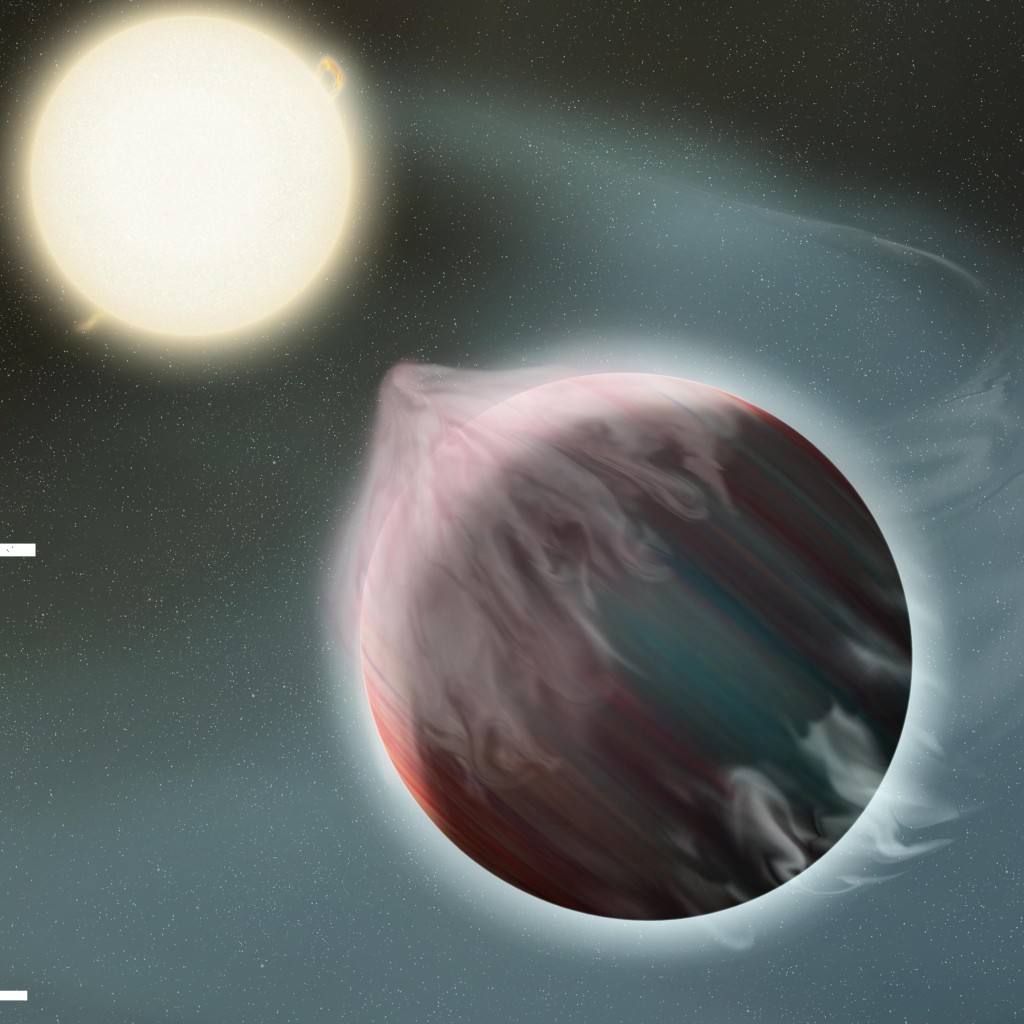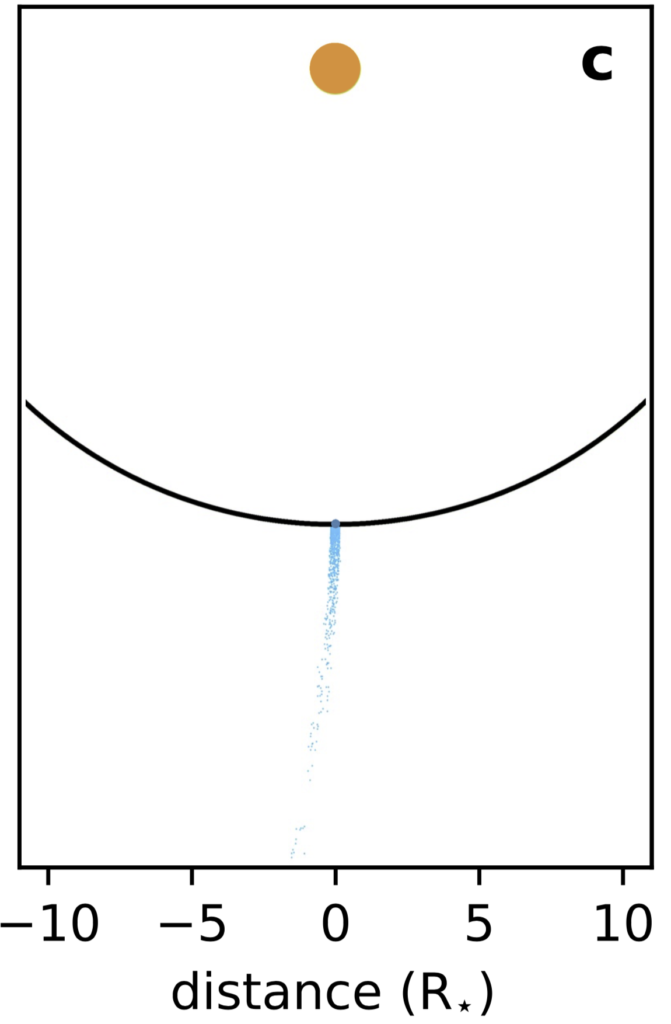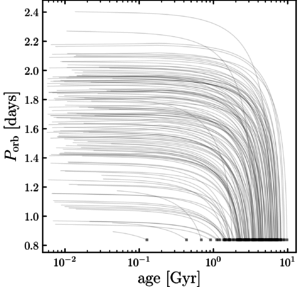
The very first exoplanet discovered around a Sun-like star, 51 Peg b, was a shocker – it’s a giant planet like Jupiter made mostly of hydrogen and helium but 100 times closer to its sun than Jupiter is to ours and whizzes around its orbit every 4 days.
Indeed, when its discoverers Michel Mayor and Didier Queloz first spotted the telltale spectral wobble of a planet in a 4-day orbit, they didn’t believe their discovery. At the time, everyone knew (or thought they knew) that planets like Jupiter could only form very far away from their host star.
Worse, so close to its star, 51 Peg b’s was being super-heated, and Mayor and Queloz worried that such a hot gas giant might quickly lose its hot, bloated atmosphere. And in their discovery paper, they suggested that the giant planet we see today as 51 Peg b might have started out as a brown dwarfthat shed trillions and trillions of lbs.
Later studies showed those early concerns about atmospheric blow-off were overblown and planets as massive as 51 Peg b, even if they are as scorched, probably can’t lose more than a fraction of their original mass. Since then, hot Jupiters like 51 Peg b, while cosmically rare, have become a fairly common type of exoplanet discovery.
But that doesn’t mean these planets aren’t losing a lot of mass, and a recent study from David Sing and colleagues looks at one of the mass-losing-est planets we know of, WASP-107b

From https://en.wikipedia.org/wiki/WASP-107b.
Sing and colleagues collected transit observations in infrared wavelengths of the WASP-107 system using the venerable Hubble Space Telescope. By looking in the infrared, they could search for the spectral signals of different gases in WASP-107b’s atmosphere.
WASP-107b is an especially good target for atmospheric characterization because its host star is very bright (compared to other planet hosts) and the planet itself is very low density – it has a mass a tenth that of Jupiter’s but a radius almost as big, giving the planet a density comparable to wind-packed snow.
With such a low density, WASP-107b’s atmosphere is puffy and distended, which means that its atmospheric gases can easily imprint their spectral signatures on the light observed by Hubble, making them easy to detect.
And for the first time in any exoplanet, Sing and colleagues saw signs of helium gas in WASP-107b’s atmospheric spectrum. In fact, the helium signal they saw was so whopping big that it suggests WASP-107b’s atmosphere is actively escaping, at a rate of about 10,000 tons per second.

Even with such a high escape rate, WASP-107b won’t fall apart anytime soon – Sing and colleagues estimate it would only lose about 4% of its mass in a billion years.
But as we continue to find more exoplanets, we should probably expect to find more even closer to their host stars with even puffier atmospheres, perhaps some on the verge of being gravitationally ripped apart. So as with 51 Peg b’s discovery, exoplanets are likely to keep challenging our preconceived notions about where planets can and cannot be.
